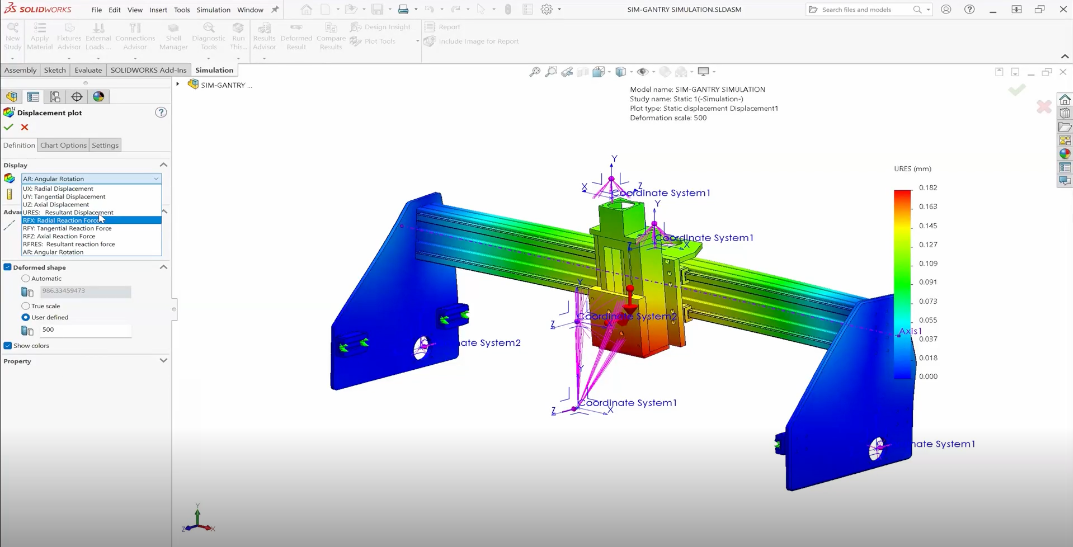Digital technologies, data analytics, smart factories, robotics, and automation have driven manufacturing to be extremely dynamic and efficient. Some call it Industry 4.0 which is a bit of a flashy buzzword to some.
Whatever you call it, companies utilizing these technologies to the max are on an upward trajectory, enhancing productivity, quality, and adaptability in ways that make it difficult for competition to keep pace with.
For example:
- L’Oréal improves product traceability by 10x with Industry 4.0 technologies.
- Behlen optimizes their factory layout with simulation tools.
- John Deere uses AI and robotics for efficient crop harvesting.
- Envision Energy maximizes wind turbine uptime with predictive maintenance.
- Tesla produces 1M+ cars annually with autonomous systems.
Many of these aspects can be enhanced through advanced simulation using digital twins of systems, products, and workflows.
These companies also leverage virtual sandboxes for experimentation and optimization. They use simulation to:
- Analyze and improve factory floor layouts
- Choreograph complex Internet of Things (IoT) networks
- Optimize motor design and more without having to do anything physically
In this blog, we’ll explore Industry 4.0 technologies and will highlight how you can leverage simulation at your company to drive efficiency, agility, and innovation.
Why is Industry 4.0 an Important Idea to Lean Into?
Frankly, it is a fundamental shift in the way we conceptualize and execute industrial processes.
It’s a symphony of interconnected and autonomous systems, where machines communicate, analyze data, and make decisions in real time, and humans get to do the stuff they do best.
- Automation: The automation aspect empowers factories to streamline operations, enhance productivity, and reduce human intervention through the deployment of robotics and autonomous systems.
- Everything is Connected: IoT devices enable seamless connectivity between machines, sensors, and systems, fostering a rich ecosystem of data exchange and analysis.
- The Rise of the Smart Factory: Intelligent systems speed production processes, leverage real-time data insights to optimize efficiency, predict maintenance needs, and enable scale.
As Industry 4.0 continues to mature, the relationship between automation, IoT, and smart factories unlock unprecedented levels of agility, scalability, and innovation that would make Henry Ford jealous.
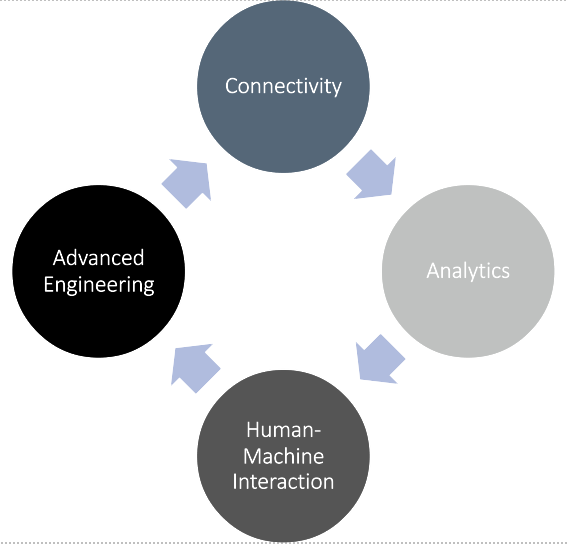
The Main Benefits of Industry 4.0: Labor Shortage and Supply-Chain Workarounds
Industry 4.0 is helping to address some of the modern challenges faced in our current economic landscape:
- Labor shortages: You can’t meet production goals when you’re not adequately staffed.
- Supply-chain issues: Delays for a single part can stop production entirely.
- Rising demand for customization: Consumers want your product but with minor tweaks.
How Simulation Has Evolved from Products to Processes
Simulation and Digital Mockups
Simulation of products has been a staple of advanced design for years. Initially, simulations focused primarily on analyzing specific aspects of a product’s performance, often in isolation and with limited integration of the overall design.
However, as technology advanced, the concept of Digital Mockups (DMU) emerged, offering a comprehensive, high-fidelity virtual representation of entire products or systems. By providing a detailed and interactive 3D model, DMUs enable engineers to:
- Conduct a wide range of simulations under various conditions
- Identify potential issues early
- Optimize the design iteratively
Digital or Virtual Twins
While similar to Digital Mockups, a digital twin is a virtual representation or model of a physical object, process, system, or entity. It is created using real-time data, sensors, and other information collected from the physical counterpart. This digital replica is not just a static representation but dynamically mirrors the physical entity’s behavior, characteristics, and interactions from design through production.
Digital twins enable simulation, analysis, and optimization of the physical element’s performance, behavior, and maintenance processes. This facilitates predictive insights, performance monitoring, and decision-making which enhances efficiency, productivity, and innovation in complex systems and processes.
Within Industry 4.0, Digital Twins are a key element in maintaining a robust manufacturing workflow. Starting with product design, different disciplines can work in a connected virtual environment to hash out new designs and incorporate simulation results as needed without having to lose time on prototypes or mistakes from miscommunications.
Additive Manufacturing or 3D Printing
Progress in 3D printing and metal forming processes have allowed designs to go from CAD to production without specialized programming of machines, reducing the steps from design to final product. Expanding to the manufacturing process, digital twins can help verify the quality of wireless networks, process workflows, electromechanical machines that are used for automated processes, and much more.

How Electromagnetic Simulation Helps Optimize Smart Factory Floorplans
In the context of smart factories, where many interconnected devices and sensors rely on seamless communication to orchestrate operations, electromagnetic simulation offers insights into complex environments. Essentially, it empowers engineers to design smart factory layouts that maximize operational efficiency, minimize downtime, and support the seamless flow of data and communication
Electromagnetic simulation can optimize smart factory layouts by:
- Enabling engineers to analyze and mitigate potential interference issues
- Enhancing signal quality
- Ensuring the efficient operation of wireless communication systems.
By accurately modeling electromagnetic fields and interactions within the factory space, engineers can identify potential sources of interference, such as machinery or structural elements, and assess their impact on wireless networks and devices.
Electromagnetic simulation also allows for the optimization of antenna placement and configuration, ensuring optimal coverage and signal strength throughout the facility.
Using SIMULIA CST Studio Suite to Optimize Wireless Comms on the Factory Floor
Using some of the advanced solver features of SIMULIA CST Studio Suite, a smart factory floor can be designed for the optimal location of machines with wireless communications. Starting with antenna placement on a device, simulation can ensure the overall quality of performance.
Whether starting with a basic IoT antenna or a more complex phased array for 5G systems, there are a host of tools in CST that help with the design, analysis, and placement of any type of antenna system.

Beyond that, the location of other machines, obstacles, and even entire rooms can be simulated to check for interference and overall performance. Insights gained from these simulations can help design entire floorplans virtually so that no time is lost troubleshooting issues in the real world.
This scale of electromagnetic simulation can be computationally intense due to the physical size being much larger than the electrical size. CST Studio has a few tricks to help reduce this complexity and speed up simulation through different solvers, mesh technology, and other advanced features.
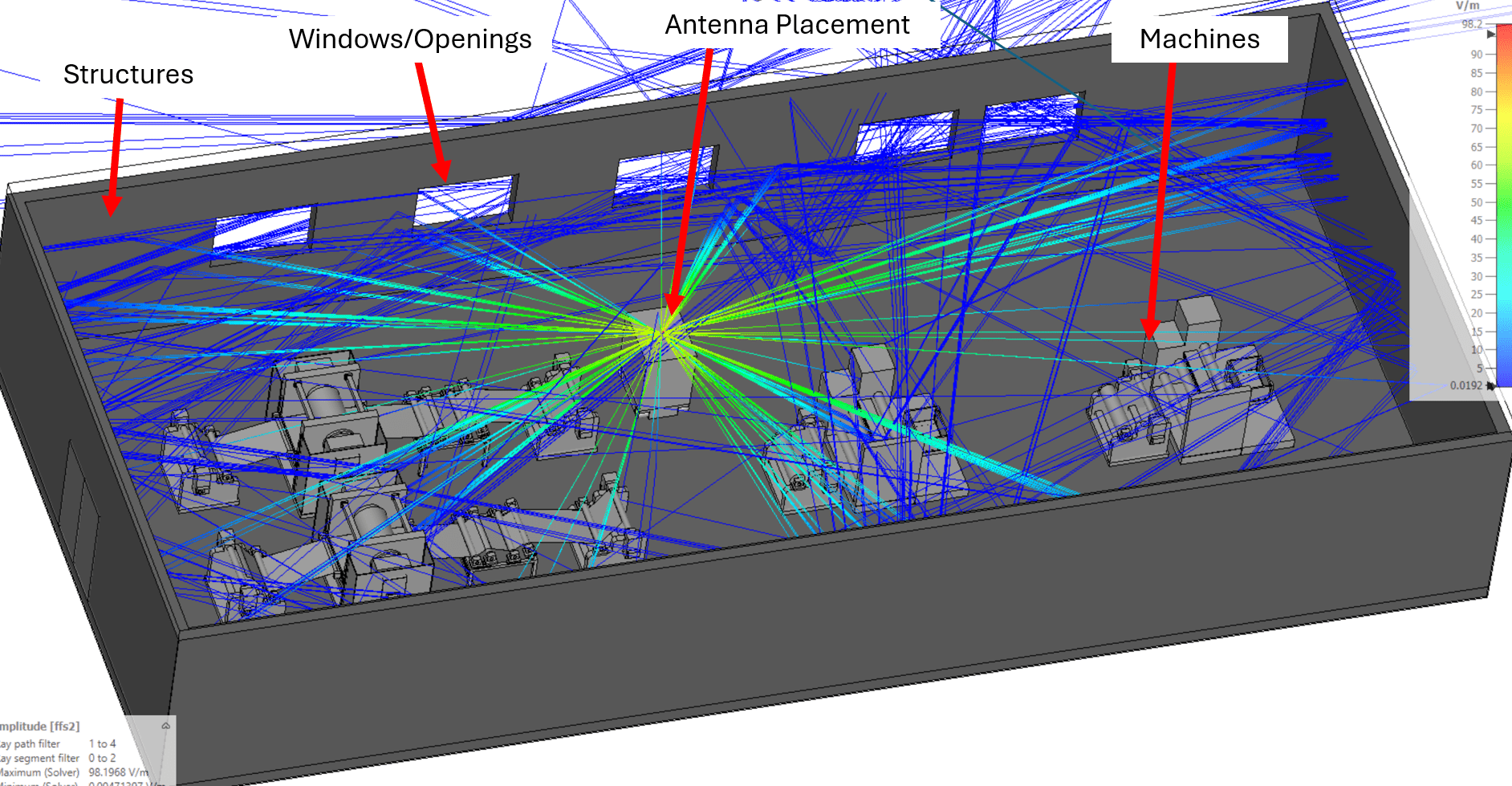
Network coverage needs to include a variety of frequency ranges, each coming with its own challenges. Most IoT systems will operate in the MHz to lower GHz frequency spectrum but there are also 5G systems deployed which can operate at 28GHz or above. At higher frequencies, one must consider the effects of reduced propagation due to losses and physical interference as well as the safety concerning radiation exposure to people.
Using the High Frequency solvers of CST Studio along with detailed human models, such as built-in voxel models, can help identify potential areas of risk for human exposure. Ensuring that employees are safe from excess radiation can be achieved by following industry standards for factors like Specific Absorbed Radiation (SAR).
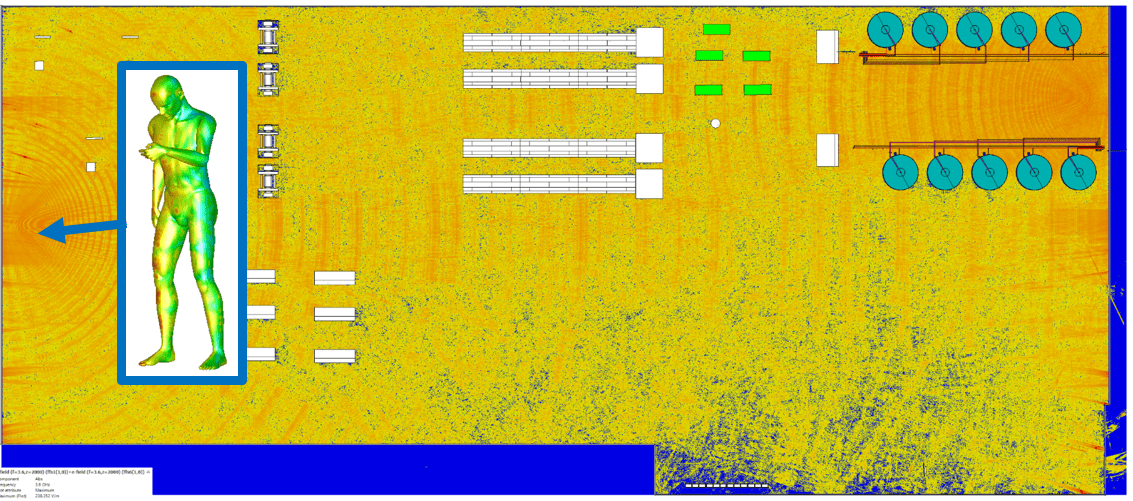
Advanced Automation in Manufacturing
Beyond confirming connection fidelity, advanced automation includes electrical machines such as actuators and motors. Automation in the manufacturing process can allow for more consistent builds, real-time monitoring of processes, and the ability to create customizations on the fly.
For these devices, the Low Frequency solvers of CST Studio can help with the design and analysis of all types of electrical machines and high-power devices that may be used on a factory floor. Being able to dial in forces, speeds, and precision control using digital twins enables faster production line setups and more confidence in the process flow.
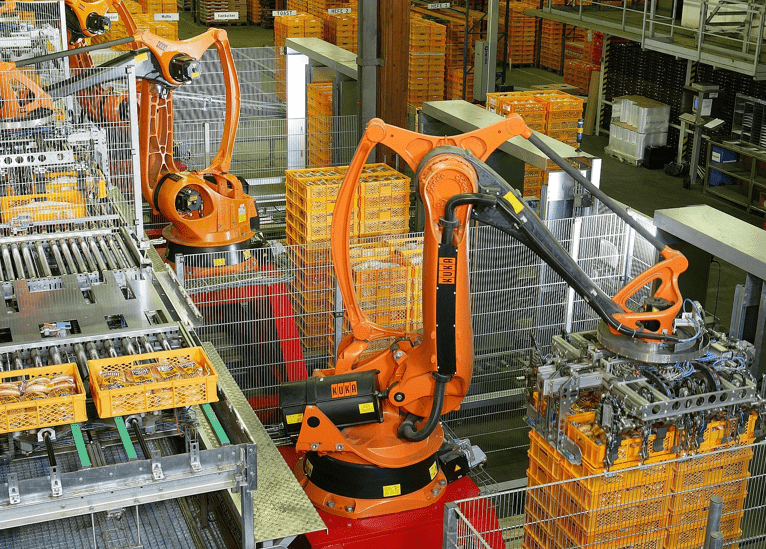

Digital Twins can be used to simulate process workflows of assembly lines using human models, automated machines, and entire environments. By capturing an entire factory floor workflow virtually, engineers and process technicians can identify slow spots or areas of concern before a single component hits the floor.
Not only does this save time and resources, but it also allows for dynamic changes to the workflow if customization is desired. Knowing how setup/breakdown times and the speed of machines vary under different requirements could make or break the efficiency of the final product.
Better Product Design with CST Studio Suite Electromagnetic Simulation
Electromagnetic simulation with CST Studio Suite can help ensure the best signal coverage, product design, and data collection that is accurate and robust.
CST is a full wave electromagnetic simulation package that can simulate any electromagnetic problem across the frequency range, from DC to THz. With a user-friendly interface and intuitive workflows, CST is an easy choice for analyzing everything from 5G phased array antennas to linear actuators to high-powered magnetics.
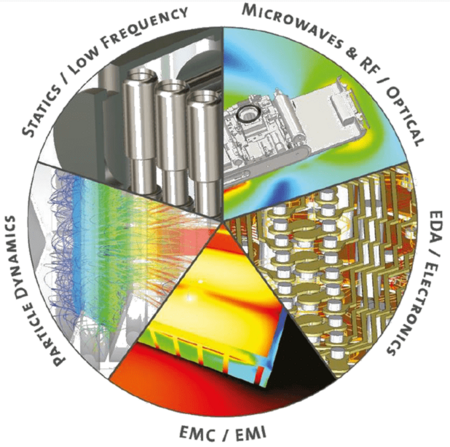
Better Products and Increased Revenue with Early Adoption of Industry 4.0 Technologies
There’s no denying it — the companies that lead the way with Industry 4.0 technologies will be lightyears ahead of the competition. As with many technologies, being early, understanding how to apply it to your business, and deciphering the best way to implement it at your organization is key.
Let Hawk Ridge Systems help you with your journey into this dynamic landscape with our team of experts covering simulation, design, data management, 3D printing, and more!



